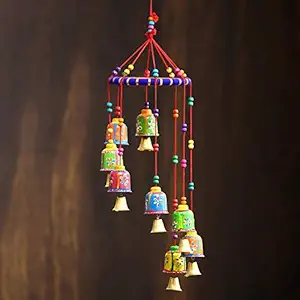परिचय
हिमाचल प्रदेश में स्थित बगलामुखी शक्तिपीठ भारत के 51 शक्तिपीठों में से एक है। ऐसा माना जाता है कि यहाँ माता सती की जीभ गिरी थी। यह स्थान शक्तिशाली संरक्षण और आध्यात्मिक शक्ति का केंद्र माना जाता है। यहाँ की प्रमुख देवी मां बगलामुखी हैं, जो शत्रुओं और नकारात्मक शक्तियों को परास्त करने वाली देवी मानी जाती हैं।
पौराणिक महत्व
दक्ष यज्ञ कथा के अनुसार, जब माता सती ने अपने पिता दक्ष के अपमान के कारण आत्मदाह किया, तब भगवान शिव अत्यंत शोकग्रस्त होकर उनका शरीर लेकर ब्रह्मांड में घूमने लगे। भगवान विष्णु ने अपने सुदर्शन चक्र से सती के शरीर को खंड-खंड कर दिया। जहाँ-जहाँ उनके अंग गिरे, वहाँ शक्तिपीठ बने। बगलामुखी शक्तिपीठ वह पवित्र स्थान है जहाँ माता की जीभ गिरी थी, जो वाणी की शक्ति, नकारात्मकता पर नियंत्रण और दिव्य शक्ति का प्रतीक है।
स्थान और महत्व
यह शक्तिपीठ हिमाचल प्रदेश में स्थित है, जो अपने आध्यात्मिक केंद्रों और पहाड़ी मंदिरों के लिए प्रसिद्ध है। माता बगलामुखी विशेष रूप से बाधाओं को दूर करने, शत्रुओं से सुरक्षा और सफलता प्राप्त करने वाली देवी मानी जाती हैं। श्रद्धालुओं का विश्वास है कि इस मंदिर में पूजा करने और अनुष्ठान करने से मानसिक शक्ति और आध्यात्मिक शक्ति बढ़ती है।
पूजा-पाठ और त्यौहार
-
भक्त माता बगलामुखी को पीले फूल, हल्दी, मिठाई और लाल वस्त्र अर्पित करते हैं।
-
नवरात्रि और बगलामुखी जयंती पर विशेष पूजा, मंत्रों का जाप और संध्या आरती होती है।
-
मंगलवार और शुक्रवार को पूजा विशेष रूप से शुभ मानी जाती है।
-
भक्त शत्रुओं, नकारात्मक प्रभावों को दूर करने और कानूनी या व्यवसायिक मामलों में सफलता पाने के लिए अनुष्ठान करते हैं।
निष्कर्ष
हिमाचल प्रदेश का बगलामुखी शक्तिपीठ आध्यात्मिक शक्ति, सुरक्षा और दैवी ऊर्जा का केंद्र है। मां बगलामुखी की पूजा करने से साहस, नकारात्मकता पर नियंत्रण और आध्यात्मिक शक्ति मिलती है, जिससे यह शक्तिपीठ पूरे भारत में अत्यंत पूजनीय बनता है।
Introduction to Bagalamukhi Shaktipeeth
Location and Sacred Importance
Bagalamukhi Shaktipeeth is located in Himachal Pradesh and is one of the 52 holy Shaktipeeths, where the tongue of Goddess Sati is believed to have fallen.
Meaning of Bagalamukhi
The name Bagalamukhi comes from Sanskrit, where ‘Bagala’ means bridle and ‘Mukhi’ means face, symbolizing the power to control and paralyze negative forces.
The Fallen Tongue of Sati
According to mythology, the tongue of Goddess Sati fell at this site, which is why the temple is associated with speech, power, and truth.
Deity Worshipped Here
The presiding goddess, Maa Bagalamukhi, is worshipped as the eighth Mahavidya, known for her power to silence enemies and grant victory in battles.
Significance for Devotees
Devotees believe worshipping here removes obstacles, silences negativity, and brings success in court cases, competitions, and conflicts.
Mythological Background
Legend of Sati’s Sacrifice
The temple’s significance is rooted in the story of Sati’s self-immolation and Lord Vishnu’s Sudarshan Chakra dismembering her body to calm Shiva’s grief.
Association with Mahavidyas
Bagalamukhi is one of the ten Mahavidyas, tantric goddesses representing divine cosmic power, with a unique role of paralyzing the speech of wrongdoers.
Puranic References
The Devi Bhagavata Purana and other texts mention Bagalamukhi Peeth as a place of immense spiritual energy, where devotees attain relief from evil influences.
Local Folklore
Local traditions describe miraculous events where devotees were freed from curses, speech problems, or enemy attacks after worship at this temple.
Connection with Tantra
This Peeth is highly significant in Tantra practices, where chanting Bagalamukhi mantras is believed to provide extraordinary protection and spiritual power.
Rituals & Worship Practices
Daily Puja and Offerings
Regular worship includes chanting of Bagalamukhi Stotra, lighting lamps, offering yellow flowers, turmeric, and sweets to the goddess.
Significance of Yellow Color
Yellow is the sacred color associated with Bagalamukhi, symbolizing energy and positivity; devotees often wear yellow clothes during rituals.
Special Bagalamukhi Mantras
Chanting of ‘Bagalamukhi Mantra’ is believed to silence enemies, bring clarity in speech, and give devotees the strength to overcome challenges.
Festivals Celebrated
Special occasions like Navratri, Guru Purnima, and other tantric festivals are celebrated with grandeur, drawing thousands of devotees.
Spiritual Benefits of Darshan
Devotees believe darshan of Bagalamukhi Maa frees them from curses, speech disorders, black magic, and grants mental stability.
Architecture & Surroundings
Temple Architecture
The temple showcases traditional North Indian temple style with shikharas, carvings, and a serene sanctum where the goddess resides.
Iconography of the Goddess
Maa Bagalamukhi is depicted pulling the tongue of a demon, symbolizing her power to silence evil forces and protect her devotees.
Temple Complex Features
The complex includes smaller shrines, meditation halls, and spaces for pilgrims to offer prayers and perform rituals.
Natural Beauty Around Temple
The temple is surrounded by scenic hills, greenery, and peaceful surroundings that enhance the spiritual experience of pilgrims.
Artistic Significance
Intricate carvings and murals depict mythological stories of Bagalamukhi Maa, adding to the temple’s artistic and spiritual aura.
Visiting Information & Travel Tips
How to Reach
The temple is accessible by road from nearby towns in Himachal Pradesh; the nearest railway stations and airports also provide connectivity.
Best Time to Visit
October to March is the best time for pilgrimage, as the weather is pleasant and festivals like Navratri enhance the devotional atmosphere.
Accommodation Options
Nearby towns offer budget hotels, dharamshalas, and guest houses to accommodate pilgrims visiting the Shaktipeeth.
Local Attractions
Pilgrims can also explore nearby temples, scenic spots, and cultural landmarks along with their visit to Bagalamukhi Shaktipeeth.
Pilgrimage Etiquette
Visitors are advised to wear yellow, maintain silence in sanctum areas, respect local customs, and avoid prohibited photography inside the temple.
Bagalamukhi Shaktipeeth is located in Himachal Pradesh and is one of the 52 holy Shaktipeeths, where the tongue of Goddess Sati is believed to have fallen.
The name Bagalamukhi comes from Sanskrit, where ‘Bagala’ means bridle and ‘Mukhi’ means face, symbolizing the power to control and paralyze negative forces.
According to mythology, the tongue of Goddess Sati fell at this site, which is why the temple is associated with speech, power, and truth.
The presiding goddess, Maa Bagalamukhi, is worshipped as the eighth Mahavidya, known for her power to silence enemies and grant victory in battles.
Devotees believe worshipping here removes obstacles, silences negativity, and brings success in court cases, competitions, and conflicts.
The temple’s significance is rooted in the story of Sati’s self-immolation and Lord Vishnu’s Sudarshan Chakra dismembering her body to calm Shiva’s grief.
Bagalamukhi is one of the ten Mahavidyas, tantric goddesses representing divine cosmic power, with a unique role of paralyzing the speech of wrongdoers.
The Devi Bhagavata Purana and other texts mention Bagalamukhi Peeth as a place of immense spiritual energy, where devotees attain relief from evil influences.
Local traditions describe miraculous events where devotees were freed from curses, speech problems, or enemy attacks after worship at this temple.
This Peeth is highly significant in Tantra practices, where chanting Bagalamukhi mantras is believed to provide extraordinary protection and spiritual power.
Regular worship includes chanting of Bagalamukhi Stotra, lighting lamps, offering yellow flowers, turmeric, and sweets to the goddess.
Yellow is the sacred color associated with Bagalamukhi, symbolizing energy and positivity; devotees often wear yellow clothes during rituals.
Chanting of ‘Bagalamukhi Mantra’ is believed to silence enemies, bring clarity in speech, and give devotees the strength to overcome challenges.
Special occasions like Navratri, Guru Purnima, and other tantric festivals are celebrated with grandeur, drawing thousands of devotees.
Devotees believe darshan of Bagalamukhi Maa frees them from curses, speech disorders, black magic, and grants mental stability.
The temple showcases traditional North Indian temple style with shikharas, carvings, and a serene sanctum where the goddess resides.
Maa Bagalamukhi is depicted pulling the tongue of a demon, symbolizing her power to silence evil forces and protect her devotees.
The complex includes smaller shrines, meditation halls, and spaces for pilgrims to offer prayers and perform rituals.
The temple is surrounded by scenic hills, greenery, and peaceful surroundings that enhance the spiritual experience of pilgrims.
Intricate carvings and murals depict mythological stories of Bagalamukhi Maa, adding to the temple’s artistic and spiritual aura.
The temple is accessible by road from nearby towns in Himachal Pradesh; the nearest railway stations and airports also provide connectivity.
October to March is the best time for pilgrimage, as the weather is pleasant and festivals like Navratri enhance the devotional atmosphere.
Nearby towns offer budget hotels, dharamshalas, and guest houses to accommodate pilgrims visiting the Shaktipeeth.
Pilgrims can also explore nearby temples, scenic spots, and cultural landmarks along with their visit to Bagalamukhi Shaktipeeth.
Visitors are advised to wear yellow, maintain silence in sanctum areas, respect local customs, and avoid prohibited photography inside the temple.

सेंट्रालिट टी-लाइट कैंडल होल्डर वोटिव्स बाउल
Buy Now
101 Panchatantra Stories for Children: Panchatantra Tales for Kids | Animal Fables with Moral Lessons | Timeless Indian Tales for Fun | Indian Storybook with Animal Characters | Read-Alouds, Toddlers | Reading for Bedtime Stories - Large Print
Buy Now